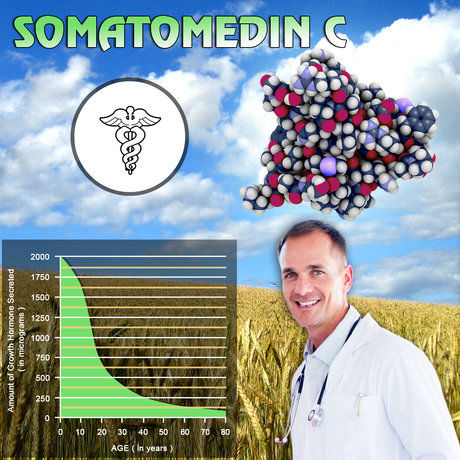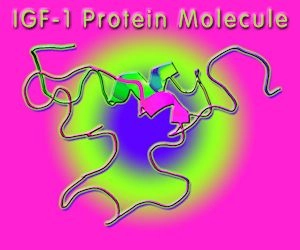Introduction
Testosterone, the primary male sex hormone, plays a crucial role in maintaining muscle mass, bone density, and overall body composition. As men age, testosterone levels can decline, leading to changes in body composition, such as increased fat mass and decreased muscle mass. Testosterone undecanoate (TU) therapy has emerged as a promising treatment for hypogonadal men, aiming to restore testosterone levels and improve body composition. This article explores the effects of TU therapy on body composition in American males, as assessed through dual-energy X-ray absorptiometry (DXA) studies.
The Role of Testosterone in Body Composition
Testosterone is essential for maintaining lean body mass and regulating fat distribution in men. Hypogonadism, characterized by low testosterone levels, can lead to increased visceral fat, reduced muscle mass, and decreased bone mineral density. These changes in body composition are associated with an increased risk of metabolic disorders, cardiovascular disease, and reduced quality of life. TU therapy aims to address these issues by restoring testosterone levels to the normal range.
Testosterone Undecanoate Therapy: Mechanism of Action
TU is a long-acting injectable form of testosterone that provides a sustained release of the hormone over several weeks. This formulation allows for less frequent dosing compared to other testosterone preparations, improving patient adherence and convenience. Once administered, TU is hydrolyzed into testosterone and undecanoic acid, with testosterone being gradually released into the bloodstream. This steady-state delivery of testosterone helps maintain stable hormone levels, which is crucial for optimizing body composition changes.
Dual-Energy X-Ray Absorptiometry: Assessing Body Composition
DXA is a non-invasive imaging technique that accurately measures body composition, including fat mass, lean mass, and bone mineral density. By emitting low-dose X-rays at two different energy levels, DXA can differentiate between bone, fat, and lean tissue. This method provides precise and reproducible measurements, making it an ideal tool for evaluating the effects of TU therapy on body composition in American males.
Impact of TU Therapy on Fat Mass
Studies using DXA have demonstrated that TU therapy significantly reduces fat mass in hypogonadal men. A meta-analysis of randomized controlled trials found that TU treatment led to a mean reduction of 2.7 kg in total fat mass compared to placebo. This reduction in fat mass is particularly notable in the visceral adipose tissue, which is strongly associated with metabolic syndrome and cardiovascular risk. By decreasing visceral fat, TU therapy may help mitigate these health risks in American males.
Enhancing Lean Body Mass with TU Therapy
In addition to reducing fat mass, TU therapy has been shown to increase lean body mass in hypogonadal men. DXA studies have reported a mean increase of 3.5 kg in lean mass following TU treatment. This gain in lean mass is primarily attributed to an increase in skeletal muscle, which is crucial for maintaining physical function and metabolic health. The anabolic effects of testosterone on muscle tissue contribute to improved strength, mobility, and overall quality of life in American males receiving TU therapy.
Improving Bone Mineral Density
Hypogonadism is a known risk factor for osteoporosis in men, as testosterone plays a vital role in maintaining bone health. DXA studies have demonstrated that TU therapy can significantly improve bone mineral density in hypogonadal men. A study of American males receiving TU treatment reported a mean increase of 3.5% in lumbar spine bone mineral density over 12 months. By restoring testosterone levels, TU therapy helps prevent bone loss and reduce the risk of fractures, particularly in older men.
Conclusion
Testosterone undecanoate therapy has shown promising results in improving body composition in American males with hypogonadism. Through the use of dual-energy X-ray absorptiometry, studies have demonstrated that TU therapy effectively reduces fat mass, increases lean body mass, and improves bone mineral density. These changes in body composition can lead to significant health benefits, including reduced risk of metabolic disorders, improved physical function, and enhanced quality of life. As research continues to support the efficacy of TU therapy, it is crucial for healthcare providers to consider this treatment option for American males struggling with the effects of low testosterone levels.
Contact Us For A Fast And Professional Response

- Testosterone Undecanoate: Enhancing Athletic Performance in American Males - Benefits and Risks [Last Updated On: February 21st, 2025] [Originally Added On: February 21st, 2025]
- Testosterone Undecanoate: Long-Acting Treatment for Hypogonadism in American Men [Last Updated On: March 17th, 2025] [Originally Added On: March 17th, 2025]
- Maximizing Testosterone Undecanoate Benefits: Diet, Exercise, and Lifestyle for American Men [Last Updated On: March 17th, 2025] [Originally Added On: March 17th, 2025]
- Testosterone Undecanoate: Cultural Perceptions, Health Impacts, and Therapeutic Use in American Males [Last Updated On: March 18th, 2025] [Originally Added On: March 18th, 2025]
- Testosterone Undecanoate: Long-Acting TRT for American Males with Hypogonadism [Last Updated On: March 18th, 2025] [Originally Added On: March 18th, 2025]
- Safety and Efficacy of Testosterone Undecanoate for American Men: A Comprehensive Review [Last Updated On: March 19th, 2025] [Originally Added On: March 19th, 2025]
- Testosterone Undecanoate Therapy: Importance of Regular Monitoring for American Men's Health [Last Updated On: March 19th, 2025] [Originally Added On: March 19th, 2025]
- Testosterone Undecanoate: Enhancing Life Quality in American Men with Hypogonadism [Last Updated On: March 19th, 2025] [Originally Added On: March 19th, 2025]
- Testosterone Undecanoate: A Potential Aid in Weight Management for American Men [Last Updated On: March 20th, 2025] [Originally Added On: March 20th, 2025]
- Testosterone Undecanoate: Combating Muscle Loss in Aging American Males [Last Updated On: March 21st, 2025] [Originally Added On: March 21st, 2025]
- Testosterone Undecanoate's Impact on Sleep Quality in American Males: Benefits and Risks [Last Updated On: March 21st, 2025] [Originally Added On: March 21st, 2025]
- Testosterone Undecanoate's Impact on Skin Health in American Males: Benefits and Risks [Last Updated On: March 21st, 2025] [Originally Added On: March 21st, 2025]
- Testosterone Undecanoate: Treating Hypogonadism and Dispelling Myths in Men's Health [Last Updated On: March 21st, 2025] [Originally Added On: March 21st, 2025]
- Testosterone Undecanoate: A Promising Therapy for Chronic Fatigue in American Men [Last Updated On: March 21st, 2025] [Originally Added On: March 21st, 2025]
- Testosterone Undecanoate: A Breakthrough in Managing Andropause for American Men [Last Updated On: March 22nd, 2025] [Originally Added On: March 22nd, 2025]
- Testosterone Undecanoate's Dual Impact on Hair Growth in American Males [Last Updated On: March 22nd, 2025] [Originally Added On: March 22nd, 2025]
- Testosterone Undecanoate: A Long-Acting Solution for Sexual Dysfunction in Men [Last Updated On: March 23rd, 2025] [Originally Added On: March 23rd, 2025]
- Testosterone Undecanoate: Enhancing Emotional Well-being in American Males [Last Updated On: March 23rd, 2025] [Originally Added On: March 23rd, 2025]
- Testosterone Undecanoate's Impact on Immune Function in American Men: Recent Findings [Last Updated On: March 23rd, 2025] [Originally Added On: March 23rd, 2025]
- Testosterone Undecanoate: A Promising Adjunct for Diabetes Management in American Males [Last Updated On: March 23rd, 2025] [Originally Added On: March 23rd, 2025]
- Testosterone Undecanoate: Enhancing Longevity and Health in American Males [Last Updated On: March 23rd, 2025] [Originally Added On: March 23rd, 2025]
- Testosterone Undecanoate's Impact on Digestive Health in American Males: A Comprehensive Analysis [Last Updated On: March 24th, 2025] [Originally Added On: March 24th, 2025]
- Testosterone Undecanoate: Enhancing Endurance in American Men Through Hormone Therapy [Last Updated On: March 24th, 2025] [Originally Added On: March 24th, 2025]
- Testosterone Undecanoate's Impact on Metabolic Health in American Men: Benefits and Risks [Last Updated On: March 24th, 2025] [Originally Added On: March 24th, 2025]
- Tailoring Testosterone Undecanoate Therapy for Diverse American Male Populations [Last Updated On: March 24th, 2025] [Originally Added On: March 24th, 2025]
- Testosterone Undecanoate: A Vital Therapy for Hypogonadism in American Male Veterans [Last Updated On: March 24th, 2025] [Originally Added On: March 24th, 2025]
- Testosterone Undecanoate's Impact on Blood Pressure in American Men: A Comprehensive Review [Last Updated On: March 24th, 2025] [Originally Added On: March 24th, 2025]
- Testosterone Undecanoate: Enhancing Fertility in American Men with Hypogonadism [Last Updated On: March 25th, 2025] [Originally Added On: March 25th, 2025]
- Testosterone Undecanoate Enhances Cognitive Function in American Men: A Review [Last Updated On: March 25th, 2025] [Originally Added On: March 25th, 2025]
- Economic Impact of Long-Acting Testosterone Undecanoate on U.S. Healthcare Costs [Last Updated On: March 25th, 2025] [Originally Added On: March 25th, 2025]
- Testosterone Undecanoate: Enhancing Male Health in American Clinical Trials [Last Updated On: March 25th, 2025] [Originally Added On: March 25th, 2025]
- Testosterone Undecanoate's Impact on Dental Health in American Males: Benefits and Risks [Last Updated On: March 26th, 2025] [Originally Added On: March 26th, 2025]
- Testosterone Undecanoate: Enhancing Life Quality in American Male Cancer Survivors [Last Updated On: March 26th, 2025] [Originally Added On: March 26th, 2025]
- Testosterone Undecanoate's Impact on Joint Health in American Men: Benefits and Risks [Last Updated On: March 26th, 2025] [Originally Added On: March 26th, 2025]
- Testosterone Undecanoate: A Novel Approach to Managing Allergies in American Males [Last Updated On: March 26th, 2025] [Originally Added On: March 26th, 2025]
- Testosterone Undecanoate's Impact on Liver Health in American Males: A Review [Last Updated On: March 26th, 2025] [Originally Added On: March 26th, 2025]
- Testosterone Undecanoate: Enhancing Injury Recovery in American Males [Last Updated On: March 26th, 2025] [Originally Added On: March 26th, 2025]
- Testosterone Undecanoate's Impact on Respiratory Health in American Men: Asthma and COPD [Last Updated On: March 27th, 2025] [Originally Added On: March 27th, 2025]
- Testosterone Undecanoate: A Promising Therapy for Chronic Pain in American Males [Last Updated On: March 27th, 2025] [Originally Added On: March 27th, 2025]
- Testosterone Undecanoate: Managing Side Effects in American Men [Last Updated On: March 27th, 2025] [Originally Added On: March 27th, 2025]
- Testosterone Undecanoate: Enhancing Eye Health in American Men [Last Updated On: March 27th, 2025] [Originally Added On: March 27th, 2025]
- Testosterone Undecanoate: Benefits and Management for American Men with Hypogonadism [Last Updated On: March 27th, 2025] [Originally Added On: March 27th, 2025]
- Testosterone Undecanoate's Impact on Hearing in American Males: A New Research Insight [Last Updated On: March 28th, 2025] [Originally Added On: March 28th, 2025]
- Testosterone Undecanoate: A Promising Treatment for Osteoporosis in American Men [Last Updated On: March 28th, 2025] [Originally Added On: March 28th, 2025]
- Testosterone Undecanoate's Impact on Cholesterol Levels in American Men: A Comprehensive Review [Last Updated On: March 28th, 2025] [Originally Added On: March 28th, 2025]
- Testosterone Undecanoate: A Promising Solution for Stress Management in American Males [Last Updated On: March 28th, 2025] [Originally Added On: March 28th, 2025]
- Testosterone Undecanoate's Impact on Kidney Function in American Men: A Comprehensive Review [Last Updated On: March 28th, 2025] [Originally Added On: March 28th, 2025]
- Testosterone Undecanoate: Enhancing Cognitive Performance in American Men [Last Updated On: March 28th, 2025] [Originally Added On: March 28th, 2025]
- Testosterone Undecanoate: Enhancing Reproductive Health in American Males [Last Updated On: March 29th, 2025] [Originally Added On: March 29th, 2025]
- Testosterone Undecanoate Enhances Skin Elasticity in American Men with Hypogonadism [Last Updated On: March 30th, 2025] [Originally Added On: March 30th, 2025]
- Testosterone Undecanoate: Dosage Adjustments for American Men with Hypogonadism [Last Updated On: March 30th, 2025] [Originally Added On: March 30th, 2025]
- Testosterone Undecanoate and Hair Loss: Risks and Mitigation Strategies for American Men [Last Updated On: March 30th, 2025] [Originally Added On: March 30th, 2025]
- Testosterone Undecanoate Enhances Nail Health in American Males with Hypogonadism [Last Updated On: March 31st, 2025] [Originally Added On: March 31st, 2025]
- Testosterone Undecanoate Therapy: Monitoring, Optimization, and Long-Term Health for American Men [Last Updated On: March 31st, 2025] [Originally Added On: March 31st, 2025]
- Testosterone Undecanoate Boosts Immune Function in American Men: Clinical Insights [Last Updated On: April 2nd, 2025] [Originally Added On: April 2nd, 2025]
- Testosterone Undecanoate: Enhancing Body Composition in American Males [Last Updated On: April 2nd, 2025] [Originally Added On: April 2nd, 2025]
- Testosterone Undecanoate: Enhancing Muscle Recovery in American Men [Last Updated On: April 6th, 2025] [Originally Added On: April 6th, 2025]
- Testosterone Undecanoate: Thrombotic Risks and Monitoring in American Men [Last Updated On: April 7th, 2025] [Originally Added On: April 7th, 2025]
- Testosterone Undecanoate's Impact on Glycemic Control in American Men with Hypogonadism [Last Updated On: April 8th, 2025] [Originally Added On: April 8th, 2025]
- Testosterone Undecanoate: A Novel Approach to Managing Anxiety in American Males [Last Updated On: April 8th, 2025] [Originally Added On: April 8th, 2025]
- Testosterone Undecanoate Enhances Bone Healing in American Men: A Comprehensive Review [Last Updated On: April 8th, 2025] [Originally Added On: April 8th, 2025]
- Testosterone Undecanoate: Enhancing Muscle Strength in American Men [Last Updated On: April 8th, 2025] [Originally Added On: April 8th, 2025]
- Testosterone Undecanoate: A Promising Treatment for Depression in American Males [Last Updated On: April 9th, 2025] [Originally Added On: April 9th, 2025]
- Testosterone Undecanoate: Skin Pigmentation Changes in American Males [Last Updated On: April 9th, 2025] [Originally Added On: April 9th, 2025]
- Testosterone Undecanoate's Impact on Heart Rate in American Men: A Comprehensive Review [Last Updated On: April 10th, 2025] [Originally Added On: April 10th, 2025]
- Testosterone Undecanoate: Enhancing Sexual Health in American Males with Hypogonadism [Last Updated On: April 11th, 2025] [Originally Added On: April 11th, 2025]
- Managing Side Effects of Testosterone Undecanoate Therapy in American Men [Last Updated On: April 12th, 2025] [Originally Added On: April 12th, 2025]
- Testosterone Undecanoate's Impact on Thermoregulation in American Men: Clinical Insights [Last Updated On: April 12th, 2025] [Originally Added On: April 12th, 2025]
- Testosterone Undecanoate's Impact on Appetite in American Males: A Comprehensive Review [Last Updated On: April 15th, 2025] [Originally Added On: April 15th, 2025]
- Testosterone Undecanoate's Impact on Sleep Quality in American Men with Hypogonadism [Last Updated On: April 16th, 2025] [Originally Added On: April 16th, 2025]
- Testosterone Undecanoate's Impact on Skin Hydration in American Males: A Comprehensive Review [Last Updated On: April 17th, 2025] [Originally Added On: April 17th, 2025]
- Testosterone Undecanoate's Impact on Blood Viscosity in American Men: Monitoring and Management [Last Updated On: April 17th, 2025] [Originally Added On: April 17th, 2025]
- Testosterone Undecanoate's Impact on Blood Flow in American Men: Benefits and Risks [Last Updated On: April 17th, 2025] [Originally Added On: April 17th, 2025]
- Testosterone Undecanoate: Enhancing Male Aesthetics and Health in American Men [Last Updated On: April 17th, 2025] [Originally Added On: April 17th, 2025]
- Testosterone Undecanoate: Enhancing Wound Healing in American Men [Last Updated On: April 18th, 2025] [Originally Added On: April 18th, 2025]
- Testosterone Undecanoate: A New Hope for Migraine Management in American Males [Last Updated On: April 19th, 2025] [Originally Added On: April 19th, 2025]
- Testosterone Undecanoate: Enhancing TRT with Lifestyle Adjustments for American Men [Last Updated On: April 19th, 2025] [Originally Added On: April 19th, 2025]
- Testosterone Undecanoate's Impact on Skin Sensitivity in American Males: Dermatological Insights [Last Updated On: April 20th, 2025] [Originally Added On: April 20th, 2025]
- Testosterone Undecanoate Therapy: Benefits and Risks for American Males [Last Updated On: April 21st, 2025] [Originally Added On: April 21st, 2025]
- Testosterone Undecanoate's Impact on Skin Texture in American Males: Benefits and Challenges [Last Updated On: April 22nd, 2025] [Originally Added On: April 22nd, 2025]
















